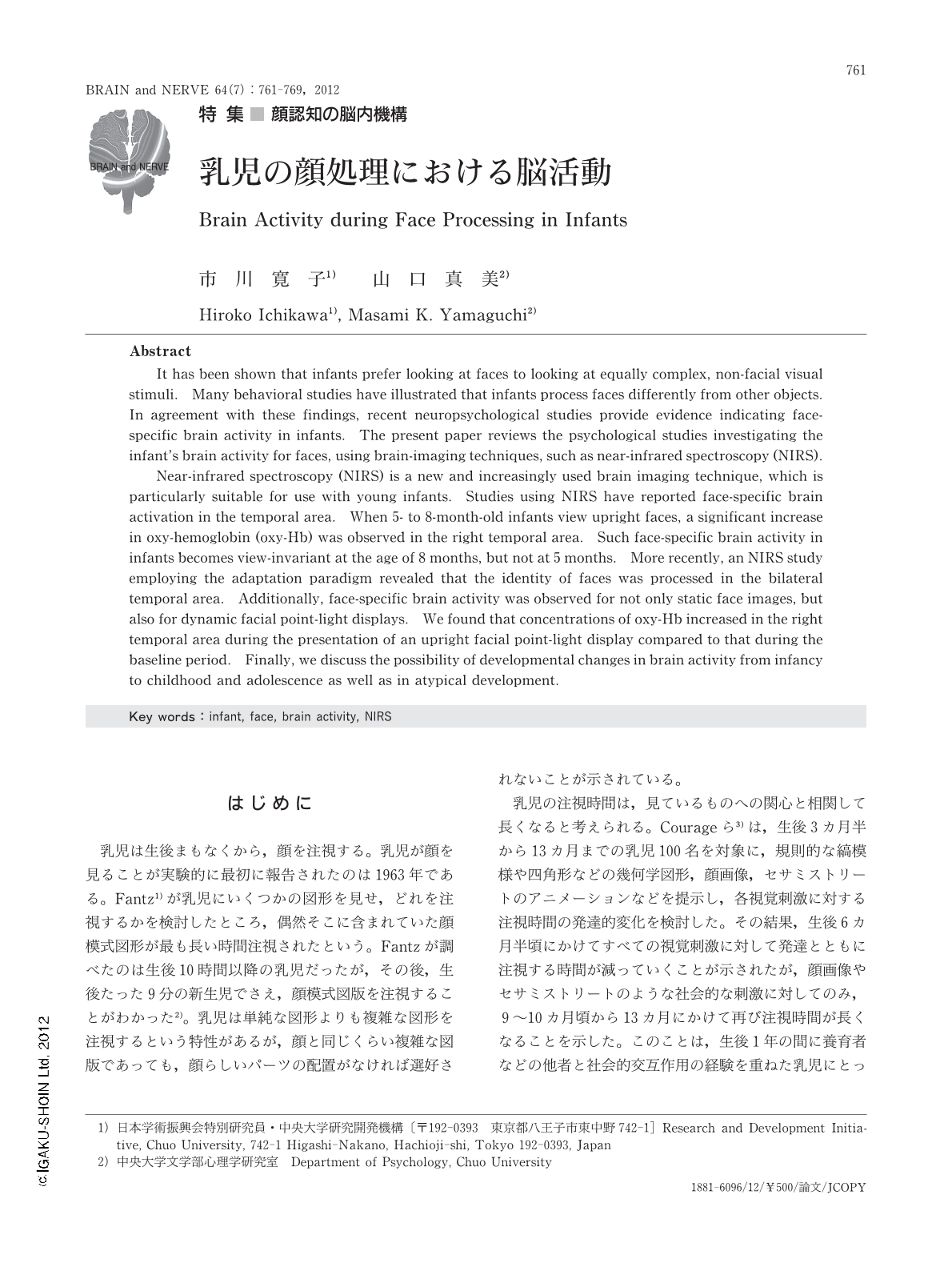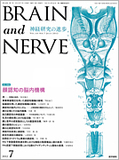Japanese
English
- 有料閲覧
- Abstract 文献概要
- 1ページ目 Look Inside
- 参考文献 Reference
はじめに
乳児は生後まもなくから,顔を注視する。乳児が顔を見ることが実験的に最初に報告されたのは1963年である。Fantz1)が乳児にいくつかの図形を見せ,どれを注視するかを検討したところ,偶然そこに含まれていた顔模式図形が最も長い時間注視されたという。Fantzが調べたのは生後10時間以降の乳児だったが,その後,生後たった9分の新生児でさえ,顔模式図版を注視することがわかった2)。乳児は単純な図形よりも複雑な図形を注視するという特性があるが,顔と同じくらい複雑な図版であっても,顔らしいパーツの配置がなければ選好されないことが示されている。
乳児の注視時間は,見ているものへの関心と相関して長くなると考えられる。Courageら3)は,生後3カ月半から13カ月までの乳児100名を対象に,規則的な縞模様や四角形などの幾何学図形,顔画像,セサミストリートのアニメーションなどを提示し,各視覚刺激に対する注視時間の発達的変化を検討した。その結果,生後6カ月半頃にかけてすべての視覚刺激に対して発達とともに注視する時間が減っていくことが示されたが,顔画像やセサミストリートのような社会的な刺激に対してのみ,9~10カ月頃から13カ月にかけて再び注視時間が長くなることを示した。このことは,生後1年の間に養育者などの他者と社会的交互作用の経験を重ねた乳児にとっては,顔が注意を向けるべき特別な視覚刺激であることを示している。
本稿では,乳児のこうした顔処理能力の発達と,それを支える脳活動を検討した心理学における実験研究を概観する。
Abstract
It has been shown that infants prefer looking at faces to looking at equally complex, non-facial visual stimuli. Many behavioral studies have illustrated that infants process faces differently from other objects. In agreement with these findings, recent neuropsychological studies provide evidence indicating face-specific brain activity in infants. The present paper reviews the psychological studies investigating the infant's brain activity for faces, using brain-imaging techniques, such as near-infrared spectroscopy (NIRS).
Near-infrared spectroscopy (NIRS) is a new and increasingly used brain imaging technique,which is particularly suitable for use with young infants. Studies using NIRS have reported face-specific brain activation in the temporal area. When 5- to 8-month-old infants view upright faces,a significant increase in oxy-hemoglobin (oxy-Hb) was observed in the right temporal area. Such face-specific brain activity in infants becomes view-invariant at the age of 8 months,but not at 5 months. More recently,an NIRS study employing the adaptation paradigm revealed that the identity of faces was processed in the bilateral temporal area. Additionally,face-specific brain activity was observed for not only static face images,but also for dynamic facial point-light displays. We found that concentrations of oxy-Hb increased in the right temporal area during the presentation of an upright facial point-light display compared to that during the baseline period. Finally,we discuss the possibility of developmental changes in brain activity from infancy to childhood and adolescence as well as in atypical development.

Copyright © 2012, Igaku-Shoin Ltd. All rights reserved.


